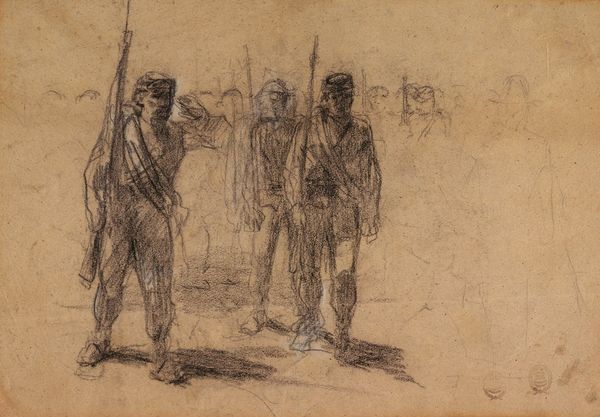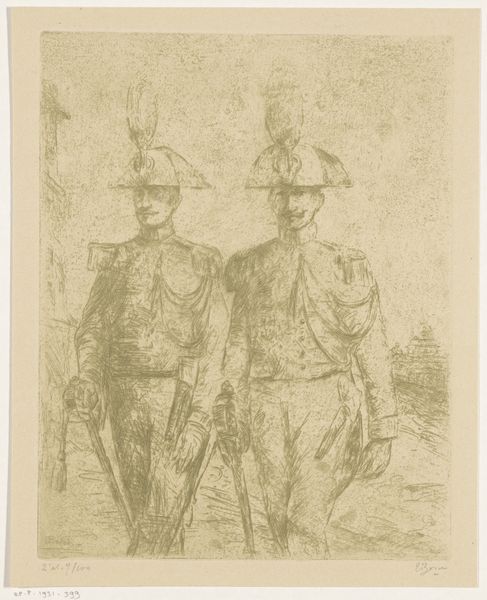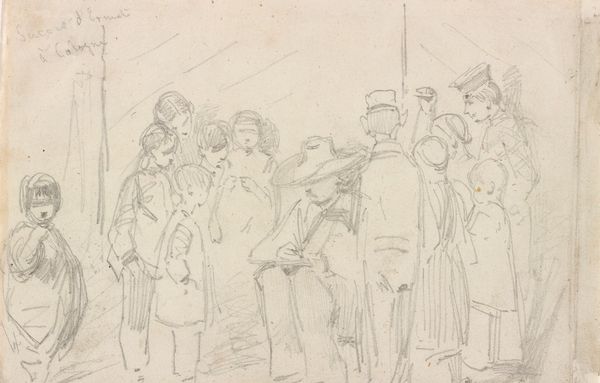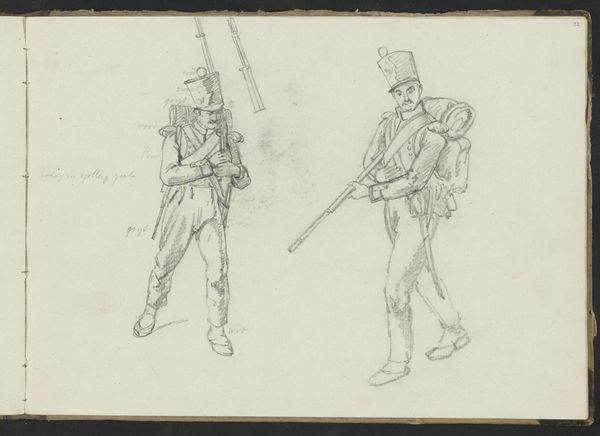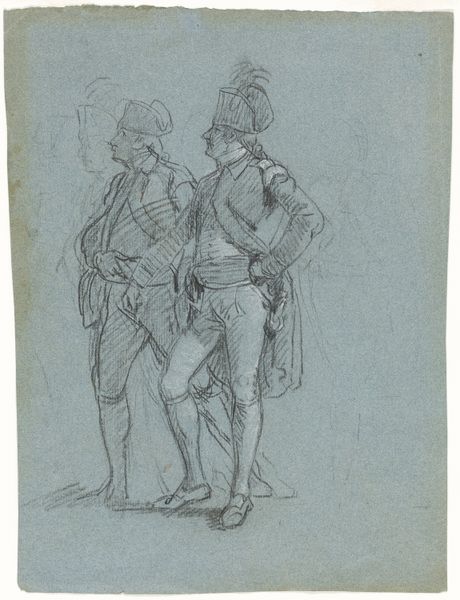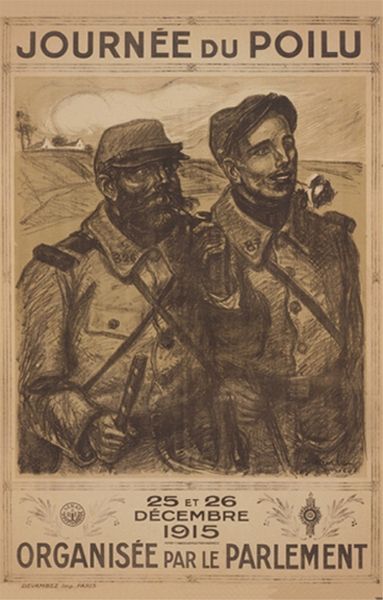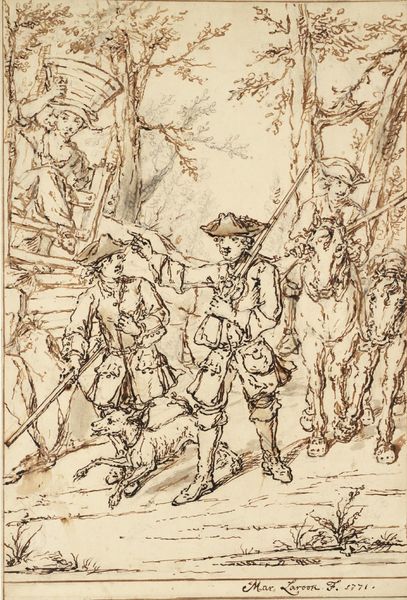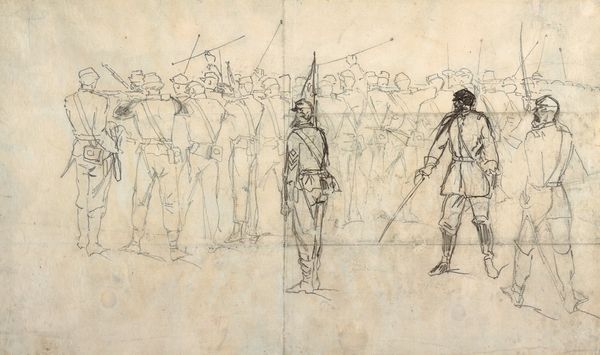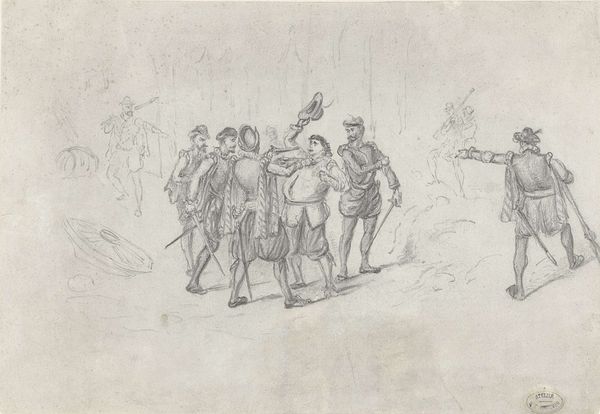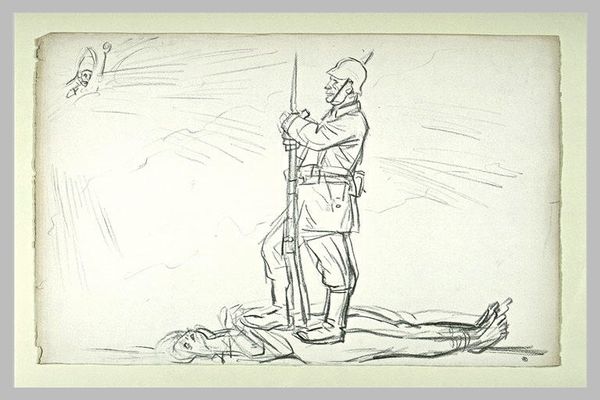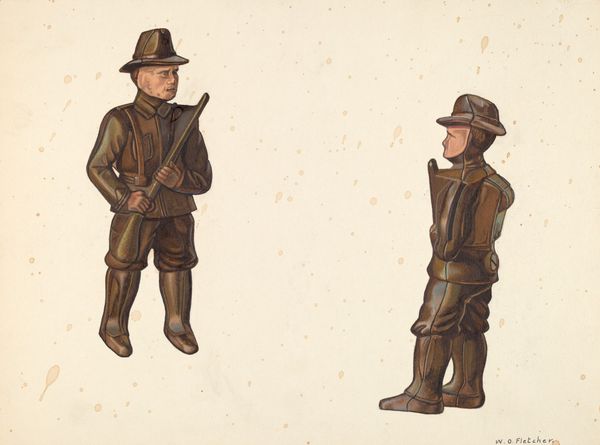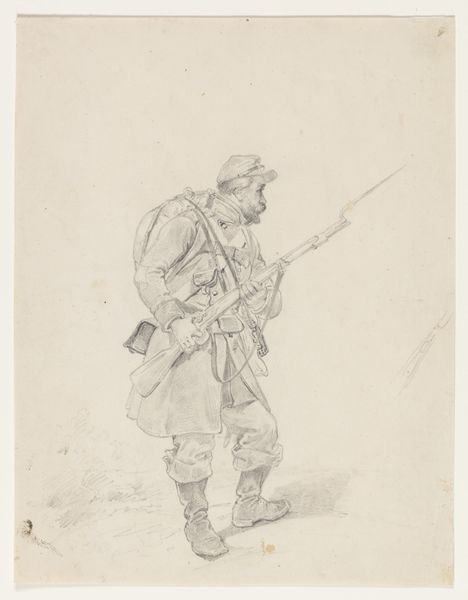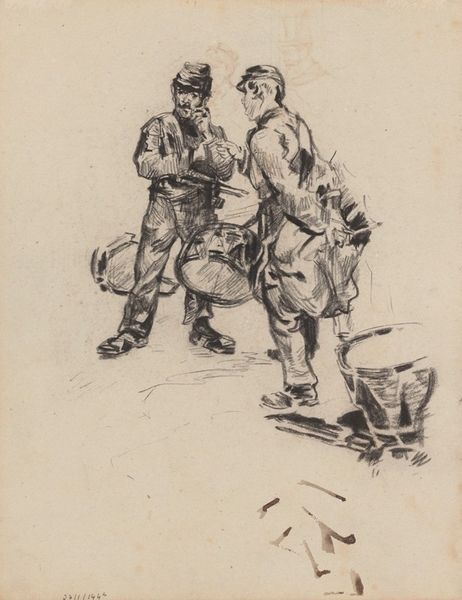
Copyright: CC-BY-NC-ND 4.0 DEED, Photo: Tate
Curator: This Charles Keene drawing, titled 'Drawing for ‘Punch’', feels so immediate, almost like a snapshot. The brisk lines give a real sense of movement to these soldiers. Editor: Indeed. Keene, who worked extensively for the magazine *Punch*, no doubt understood the socio-political power of accessible imagery. Consider how readily this image could be reproduced and disseminated. Curator: And the materials! Look at the economy of line, the way he suggests form and texture with the barest of strokes. It speaks to a mastery of the medium, a real understanding of the printing process itself. Editor: The magazine provided a critical, sometimes satirical, lens on British society. The soldiers depicted here are, therefore, presented to the public for potential commentary and debate. Curator: Absolutely, and the choice of ink, the quality of paper—these material choices informed the final printed product and its reception by the Victorian public. It's not just about what's depicted, but how it's delivered. Editor: Precisely. The artwork’s ultimate destination shapes our understanding of its creation. A piece produced for mass consumption holds a different societal position than something destined for a gallery wall. Curator: Agreed. Thinking about the labor involved in its reproduction, as well as its subject, gives it so much more weight. Editor: A poignant reminder of how the magazine acted as a powerful social mirror.
